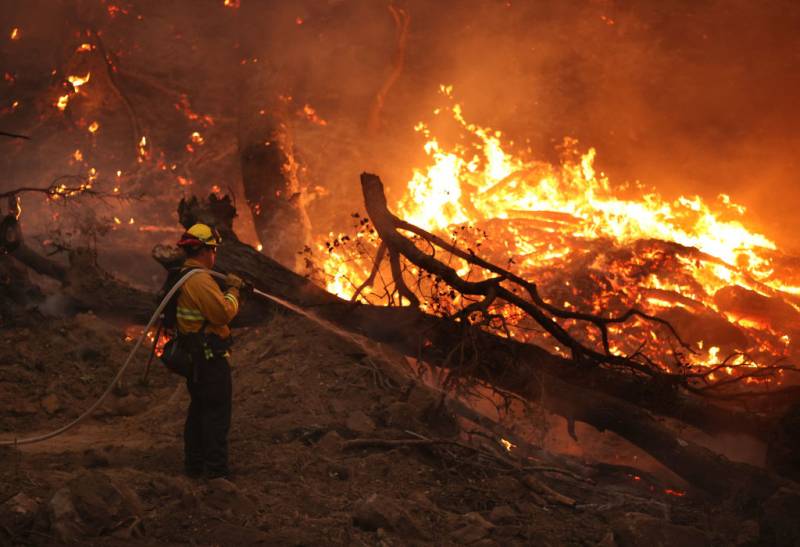Skip to latest evacuation orders and shelter information
Update, 10 a.m. Tuesday: As of the morning of Oct. 6, the Glass Fire had burned 66,840 acres and was 50% contained. It had destroyed over 1,000 structures, including 310 single-family residences in Sonoma County and 290 in Napa County. Nearly 21,785 other structures were still under threat.
Original post, 3:30 p.m. Monday:
Firefighters made steady progress over the weekend in their battle to rein in the Glass Fire in Napa and Sonoma counties, keeping much of the fire at bay, despite windy, critically dry conditions and temperatures that reached into the triple digits.
Crews by Monday morning had increased containment of the voracious blaze to 30%, successfully holding control lines and allowing thousands of residents to return to their homes.
Warnings of powerful winds that officials feared could further drive flames never fully materialized, and ground crews received much-need assistance from above, as skies in some areas cleared enough to allow large air tankers — previously sidelined because of smoke — to drop retardant on some of the most active parts of the fire.
“In certain areas, we were able to get quite a bit of aircraft in. So we really pounded a couple different areas hard with aircraft,” Cal Fire spokesman Scott McLean said. “If the weather does what is predicted, we’re on that glide path I hope. But that doesn’t diminish the amount of work that still needs to be done.”
